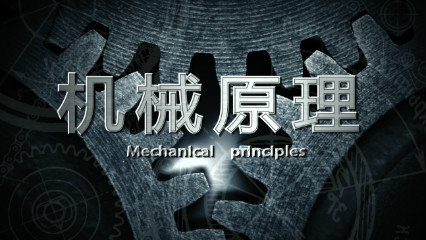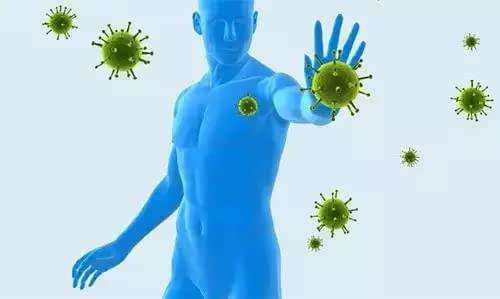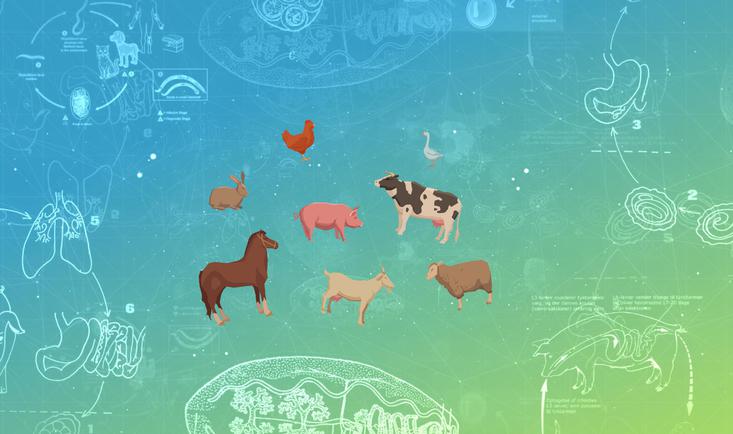
当前课程知识点:Production Engineering > Chapter 7 Water Injection > 7.4 Analysis and Application of Injectivity Index Curves > 7.4.2 Injection Choke Deployment
返回《Production Engineering》慕课在线视频课程列表
返回《Production Engineering》慕课在线视频列表
同学们好
本节我们学习水嘴调配
关于分层注水
我们希望同学们记住两句话
一个是分层注水
是由分层注水管柱实现
另外一句话
就是分层定量注水
是由水嘴直径和个数确定
也就是说对于分层注水 它的实质
是井口压力相同的情况下
利用调配水嘴的方式
也就是利用了水嘴的节流损失
对各个注水层位它的注水量
进行控制
也就是说分层注水通过管柱
实现了分层注水的可能性
而具体的实施
是采用了不同的水嘴直径
和水嘴个数来进行的
对于水嘴的节流
我们首先看一下它的嘴损曲线
这个公式表达的是不同直径的水嘴
它的注入量跟流过水嘴的节流损失
之间的对应关系
画出来的曲线就是所谓的嘴损曲线
纵轴表达经过水嘴的节流损失
横轴是经过水嘴的注入量
每一条曲线代表的是不同直径的水嘴
一般在水井上水嘴是成对使用的
因此嘴损曲线里面提供的
每一条线代表的是一对水嘴
它的节流损失跟注入量之间的对应关系
通过这个公式我们可以知道
直径与经过节流损失的平方之间
是一个线性的关系
水嘴的直径越小曲线上移
而且斜率变大
我们来看注水井的注入压力是怎么计算的
首先 注入量跟注入压力之间的关系
我们是通过注入的吸水指数来表达的
这个地方的P后表达的
就是对着储层的注入压力
也就是在节流器之后的压力
与地层压力之间的差值
k表示的是注入层的吸水指数
而P前表示的
就是在配水器之前的这个压力
这个压力等于井口的油压
加上一段液柱的压力
这一段液柱的压力
大家一定要注意
井口压力加上这段液柱的压力
才能把压力折到了井下的这个位置
要减掉摩阻
是因为在注入的过程中
流过油管的时候会产生摩擦阻力
那么这个P后
它是怎么计算出来的呢
它是由P前加上配水气的节流损失
具体的来说 就是经过水嘴的节流损失
再减去进入地层的这个摩阻
特别是流过孔眼的这个摩阻
通过这三个公式 我们可以整理出
通过水嘴的节流损失与注入量之间的关系
这就是我们进行水嘴调配的依据
对于新注入井水嘴的选择
以下几个步骤
第一 我们先确定分层的指示曲线
这是我们进行分层注水的一个依据
根据分层的指示曲线
油藏会给我们每层的配注量
根据这个配注量的大小
就可以确定每层的注入压力是多少
要注意的是 这时候确定的注入压力
是嘴后压力
那么下面就是根据嘴损曲线
来确定水嘴的直径和个数
也就意味着 我们知道了嘴后的压力
按照我们前面所说的换算关系
我们就可以得到 每一个嘴后压力
所对应的嘴损的嘴损压力是多少
那么根据这条嘴损曲线
对应给定的每个层位的配注量
我们就可以得到所选定的
水嘴的直径和个数
对于已经安装水嘴的注水井来说
那么它的注水井调配
是如何实现的呢
也就是 已经通过水嘴的调配之后
经过一段时间的生产
需要再进一步的进行调节的时候
在这里面我们需要注意的是
对于原有水嘴的指示曲线
我们得到了它的嘴损压力
和注入量之间的关系
如果我们需要对注入量进行一个调节
调节量的大小 我们就可以换算出
它所对应的嘴损压力的变化
那么这个嘴损压力的变化
应该是在原有的压力基础之上的
一个变化
这一点 是在已经注水的注水井
进行水嘴调配的时候 要注意的一个问题
这就是本节介绍的主要内容
同学们再见
-1.1 Main Tasks of Production Engineering
--1.1 Main Tasks of Production Engineering
-1.2 Flow in Production System
--1.2 Flow in Production System
-Problems
--Chapter 1 - Problems
-2.1 IPR Curve and Well Productivity
--2.1.1 Single-Phase Oil Inflow Performance Relationships
-2.2 Vogel's IPR and Applications
--2.2.2 Determination of IPR Curves Using Vogel's Equation
--2.2.3 Skin Factor and Flow Efficiency
--2.2.4 Extension of Vogel's Equation for Non-Complete Wells
--2.2.5 Combination Single-Phase Liquid and Two-Phase Flow
-Problems
--Chapter 2--Problems
-3.1 Two-Phase Flow in Wellbore
--3.1.1 Flow Regimes in Vertical Flow
-3.2 Two-Phase Vertical Flow Pressure Gradient Models
--3.2.1 Two-Phase Pressure Gradient Equations
--3.2.2 Predicting Gas-Liquid Flow Regimes Using the Okiszewski Correlation
--3.2.3 Pressure Gradient Calculation Using the Okiszewski Correlation
-3.3 Vertical Lift Performance
--3.3 Vertical Lift Performance
-Problems
--Chapter 3--Problems
-4.1 Nodal Analysis Approach
--4.1.2 Solution Node at Bottom of Well
--4.1.3 Solution Node at Wellhead
-4.2 Flow through Chokes
--4.2.2 Solution Node at Choke
-Problems
--Chapter 4--Problems
-5.1 Principles of Gas Lift
--5.1.2 Initial Kick-off of Gas Lift
-5.2 Gas Lift Valves and Gas Lift Completions
-5.3 Gas Lift Design
--5.3.1 Gas Lift Design for Specific Production Rate
--5.3.2 Gas Lift Design for Specific Injection Rate
--5.3.3 Kick-off Procedure with Unloading Valves
--5.3.4 Design Depths of Unloading Valves
-Problems
--Chapter 5--Problems
-6.1 Introduction of Surface and Downhole Equipment
-6.2 Operating Principle of Sucker Rod Pumps
-6.3 Pumping Unit Kinematics
--6.3.1 Motion of Polished Rod-Simple Harmonic Motion
--6.3.2 Motion of Polished Rod-Crank and Pitman Motion
-6.4 Polished Rod Load
--6.4.3 Peak Polished Rod Load and Minimum Polished Rod Load
-Problems
--Problems for chapter 6: Sucker Rod pumping I
-6.5 Calculation of Counterbalancing, Torque and Power
--6.5.1 Balance of Pumping Unit
--6.5.2 Counterbalancing Calculation
--6.5.3 Torque and Torque Factor
-6.6 Volumetric Efficiency of Pump
--6.6.2 Gas Effect on Pump Performance
--6.6.3 Measures of Enhancing Pump Volumetric Efficiency
-6.7 Design of Pumping System
--6.7.1 Strength Calculation and Design of Sucker Rod Strings
--6.7.2 Design Procedures of Pumping System
-6.8 Analysis of Sucker Rod Pumping Well Conditions
--6.8.1 Acoustic Surveys and Analysis of Annular Liquid Levels
--6.8.2 Introduction of Dynamometer Card
--6.8.3 Typical Dynamometer Cards
-Problems
--Problems: Chapter 6: Sucker Rod Pumping (II)
-7.1 Water Injection System
--7.1.1 Water Resources and Water Treatment
--7.1.2 Introduction of Water Injection System
-7.2 Injectivity Analysis
--7.2.1 Injectivity and Injectivity Index Curves
-7.3 Injection Tubing String
--7.3 Introduction of Injection Tubing Strings
-7.4 Analysis and Application of Injectivity Index Curves
--7.4.1 Analysis of Injectivity Index Curves
--7.4.2 Injection Choke Deployment
-Problems
--Chapter 7--Problems
-8.0 Introduction
-8.1 The Fracturing of Reservoir Rock
--8.1.1 Basic Rock Mechanics Parameters
--8.1.4 Fracture Initiation Conditions
-Problems
--Chapter 8(I)--Problems
-8.2 Fracturing Fluids
--8.2.2 Fluid-Loss Properties of Fracturing Fluids
--8.2.3 Rheological Properties of Fracturing Fluids
-8.3 Proppants
-8.4 Hydraulic Fracturing Design
--8.4.1 Productivity Index of Hydraulic Fracturing Wells
--8.4.2 Fracture Geometry Models
--8.4.3 Design Procedure for Hydraulic Fracturing
-Problems
--Chapter 8(II)--Problems
-9.0 Introduction
-9.1 Carbonate Acidizing
--9.1.1 Mechanism of Carbonate Acidizing
--9.1.2 Effect Factors of Reaction Rate
--9.1.4 Effective Distance of Live Acid
-9.2 Sandstone Acidizing
--9.2.1 Mechanism of Sandstone Acidizing
--9.2.2 Mud Acid Treatment Design
-9.3 Acidizing Treatment Technologies
--9.3.2 Acidizing Treatment Operations
-Problems
--Chapter 9--Problems
-Final Exam




